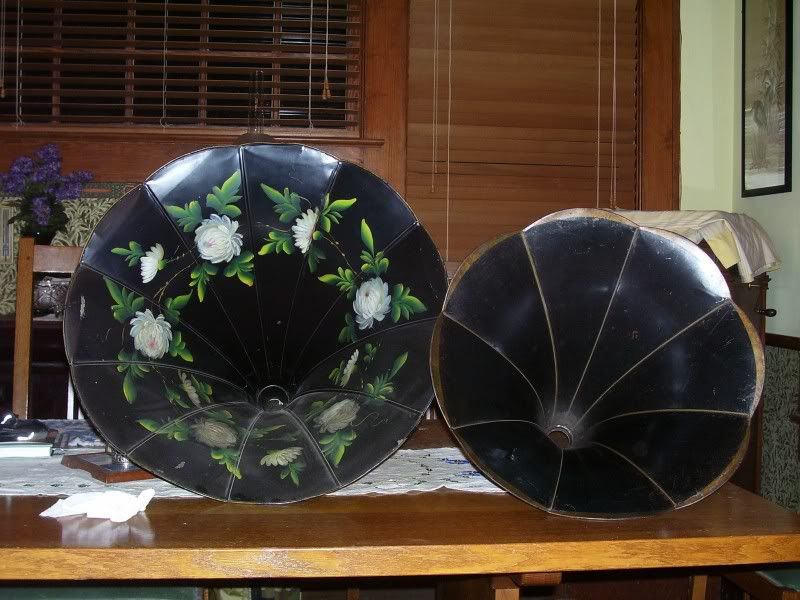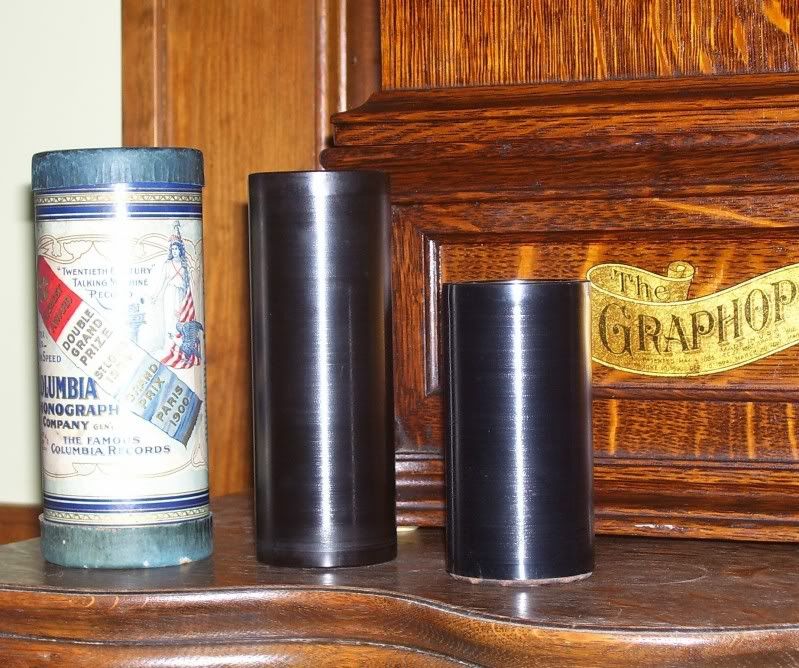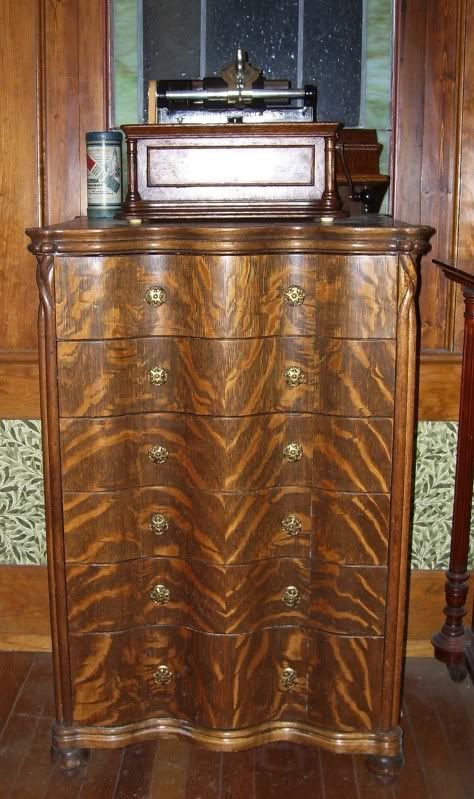No rowing today. This message was in my E-mail box last night: Row tomorrow is cancelled due to high waters and the ramp being pulled. Damn!
This constant rain is wearing me down. Monday I drove to
When you are a collector it seems you are always in a state of flux. Speaking for myself, I’m always working to upgrade my collection. Last June I purchased a phenomenal cylinder record cabinet: A rare style I have never had an opportunity to acquire. Looking like a chest of drawers, five drawers house standard sized cylinder records. The bottom drawer is 6” high to accommodate the new 6” cylinder records introduced by the Columbia Graphophone Co in 1906. These rare cylinders increased the playing time of a standard cylinder from two to three minutes.
An improved Columbia Cylinder record next to a “standard” cylinder record.
The furniture factories in the early 1900’s produced vast amounts of furniture in “golden oak”. Much of this furniture was cheaply made and of questionable style. It was not till the nostalgia craze of the 1970’s that oak furniture began to be appreciated.
Early phonographs mimicked sewing machines of the day. The decals on the front that are so highly prized today were scorned by the "classy people" as being gaudy and blatant advertising. Painting the phonograph horn with flowers gave a real Victorian air to these modern players.
Hopefully I will be able to have the flower paintings duplicated to the plain horn by a talented artist....

Quarter sawn oak exposes the “ray flake” the decorative wavy pattern prominent in quartersawn wood. This is sometimes called “tiger stripe oak”. The older the tree, the larger the ray flake. Quatersawing lumber is quite wasteful; hence furniture boasting being made of quatersawn lumber was always sold at a premium. The last stands of first growth virgin oak trees were exhausted in the first quarter of the 20th century.
The tree this veneer came from must have been HUGE!
Armed with this knowledge I have a greater appreciation of the woods used in old furniture and building. The quality of the virgin growth lumber logged 100 years ago will never be equaled.
The sun is actually shining as I finish up this entry. I took a chance and hung up a load of laundry on the line before daybreak. Hopefully it will fully dry before the rain returns tonight.





No comments:
Post a Comment